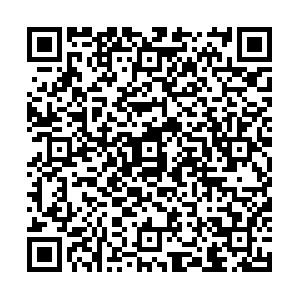-
摘要: 近期2019新型冠状病毒变异毒株奥密克戎BA.2亚型在全球大流行,对人民的生命安全造成了较大的影响。肿瘤患者因疾病自身或治疗的原因处于免疫失衡状态,更易罹患2019冠状病毒病(coronavirus disease 2019,COVID-19),并且感染后病死率高于正常人群。肿瘤患者和正常人群在感染病毒后免疫状态有所不同,主要表现为两个方面,一方面是各类细胞因子不受调节的过度释放,另一方面是体液免疫和细胞免疫的后继无力,故抗肿瘤治疗策略也应进行相应的调整。现对相关的研究进展做一综述,为这类特殊人群的治疗提供参考。Abstract: Recently, 2019 novel coronavirus variant strain Omicron BA.2 subtype is in a global pandemic and of great danger to people’s safety. Tumor patients are in a state of immune imbalance due to the disease itself or treatment, so they are more likely to suffer from coronavirus disease 2019 (COVID-19), and the mortality after infection is higher than normal people. Immune status differs between tumor patients and normal population after virus infection, which includes two aspects: one is the unregulated excessive release of various cytokines, and the other is the subsequent weakness of humoral and cellular immunity. Therefore, the anti-tumor treatment strategy should be adjusted accordingly. A review of the relevant research progress is presented to provide reference for the treatment of this special population.
-
Key words:
- coronavirus disease 2019 (COVID-19) /
- tumor /
- immune /
- treatment
-
表 1 肿瘤患者各个治疗不同阶段疫苗接种建议
肿瘤类型 治疗方式 接种时机 疫苗种类 血液系统肿瘤 骨髓移植(自体、异体) 移植后3个月以上 WHO推荐的疫苗类型,第三针或第四针最好采用不同技术路线的疫苗 细胞免疫治疗(如CAR-T) 治疗后3个月以上 化疗 末次化疗后3个月以上 靶向治疗(如抗CD20单抗) 抗CD20单抗结束治疗后6个月以上 实体瘤 手术 手术并发症恢复后 放疗 任何时期 化疗 末次化疗后淋巴细胞恢复正常 靶向治疗 任何时期 内分泌治疗 任何时期 免疫治疗 末次治疗后3个月以上 注:骨髓移植或细胞免疫治疗需要3个月左右的免疫重建,因此建议3个月后接种疫苗;血液肿瘤一般采用强化疗方案,建议末次化疗后3个月接种;CD20单抗可导致B细胞长久封闭,建议末次用药后6个月根据B细胞情况而定,如果采用美罗华长期维持,不建议接种疫苗;疫苗接种可能加重irAE,免疫治疗患者建议末次治疗后3个月(疫苗接种前都需要检测血常规及各项免疫指标保证淋巴细胞计数及炎症指标在正常范围内) -
[1] Huang C, Wang Y, X Li, et al. Clinical features of patients infected with 2019 novel coronavirus in Wuhan, China[J]. The Lancet, 2020, 395(10223):497-506. doi: 10.1016/S0140-6736(20)30183-5 [2] Magazine N, Zhang TY, Wu YY, et al. Mutations and evolution of the SARS-CoV-2 spike Protein[J]. Viruses, 2022, 14(3):640. doi: 10.3390/v14030640 [3] 中国疾控中心. 新型冠状病毒肺炎疫情分布[R/OL]. https://2019ncov.chinacdc.cn/2019-nCoV/. [4] Williamson EJ, Walker AJ, Bhaskaran K, et al. Factors associated with COVID-19 death using OpenSAFELY[J]. Nature, 2020, 584(7821):430-436. doi: 10.1038/s41586-020-2521-4 [5] Havervall S, Rosell A, Phillipson M, et al. Symptoms and functional impairment assessed 8 months after mild COVID-19 among health care workers[J]. JAMA, 2021, 325(19):2015-2016. doi: 10.1001/jama.2021.5612 [6] Bakouny Z, Hawley JE, Choueiri TK, et al. COVID-19 and cancer: current challenges and perspectives[J]. Cancer Cell, 2020, 38(5):629-646. doi: 10.1016/j.ccell.2020.09.018 [7] Yang L, Liu SS, Liu JY. COVID-19: immunopathogenesis and immunotherapeutics[J]. Signal Transduct Target Ther, 2020, 5(1):128. doi: 10.1038/s41392-020-00243-2 [8] Li DY, Wu MH. Pattern recognition receptors in health and diseases[J]. Signal Transduct Target Ther, 2021, 6(1):291. doi: 10.1038/s41392-021-00687-0 [9] Arellano A, Vela J, Hernandez A, et al. Chronic lymphocytic leukemia in the SARS-CoV-2 pandemic[J]. Current Oncology Reports, 2022, 24(2):209-213. doi: 10.1007/s11912-022-01198-z [10] Jamal M, Bangash HI, Habiba M, et al. Immune dysregulation and system pathology in COVID-19[J]. Virulence, 2021, 12(1):918-936. doi: 10.1080/21505594.2021.1898790 [11] Ziegler C, Allon SJ, Nyquist SK, et al. SARS-CoV-2 Receptor ACE2 is an interferon-stimulated gene in human airway epithelial cells and is detected in specific cell subsets across tissues[J]. Cell, 2020, 181(5):1016-1035. doi: 10.1016/j.cell.2020.04.035 [12] Pan Y, Jiang X, Yang L, et al. SARS-CoV-2-specific immune response in COVID-19 convalescent individuals[J]. Signal Transduct Target Ther, 2021, 6(1):256-266. doi: 10.1038/s41392-021-00686-1 [13] Bange E, Nicholas AH, Paul W, et al. CD8+ T cells contribute to survival in patients with COVID-19 and hematologic cancer[J]. Nat Med, 2021, 27(7):1280-1289. doi: 10.1038/s41591-021-01386-7 [14] Fendler A, Au L, Shepherd STC, et al. Functional antibody and T cell immunity following SARS-CoV-2 infection, including by variants of concern, in patients with cancer: the CAPTURE study[J]. Nat Cancer, 2021, 2(12):1321-1337. doi: 10.1038/s43018-021-00275-9 [15] Candia PD, Prattichizzo F, Garavelli S, et al. T cells: warriors of SARS-CoV-2 infection[J]. Trends Immunol, 2021, 42(1):18-30. doi: 10.1016/j.it.2020.11.002 [16] Rahimmanesh I, Shariati L, Dana N, et al. Cancer occurrence as the upcoming complications of COVID-19[J]. Front Mol Biosci, 2022, 8:813175. doi: 10.3389/fmolb.2021.813175 [17] Fendler A, Vries E, GeurtsvanKessel C, et al. COVID-19 vaccines in patients with cancer: immunogenicity, efficacy and safety[J]. Nat Rev Clin Oncol, 2022, 19(6):385-401. doi: 10.1038/s41571-022-00610-8 [18] Seneviratn SL, Yasawardene P, Wijerathne W, et al. COVID-19 vaccination in cancer patients: a narrative review[J]. J Int Med Re, 2022, 50(3): 3000605221086155. [19] Cheung PHH, Chan CP, Jin DY. Lessons learned from the fifth wave of COVID-19 in Hong Kong in early 2022[J]. Emerg Microbes Infect, 2022, 11(1):1072-1078. doi: 10.1080/22221751.2022.2060137 [20] Zeng C, Evans JP, Chakravarthy K, et al. mRNA booster vaccines elicit strong protection against SARS-CoV-2 omicron variant in cancer patients[J]. Cancer Cell, 2022, 40(2):117-119. doi: 10.1016/j.ccell.2021.12.014 [21] Garreffa E, Hamad A, O'Sullivan CC, et al. Regional lymphadenopathy following COVID-19 vaccination: literature review and considerations for patient management in breast cancer care[J]. Eur J Cancer, 2021, 159:38-51. doi: 10.1016/j.ejca.2021.09.033 [22] Piñana JL, López-Corral L, Martino R, et al. SARS-CoV-2-reactive antibody detection after SARS-CoV-2 vaccination in hematopoietic stem cell transplant recipients: prospective survey from the spanish hematopoietic stem cell transplantation and cell therapy group[J]. Am J Hematol, 2022, 97(1):30-42. doi: 10.1002/ajh.26385 [23] 王珞,徐燕,张路,等.肿瘤患者新冠疫苗接种: 临床研究进展与初步临床推荐[J].中国肺癌杂志,2021,24(6):377-383. [24] Robilotti EV, Babady NE, Mead PA, et al. Determinants of severity in cancer patients with COVID-19 illness[J]. medRxiv, 2020,DOI: 10.1101/2020.05.04.20086322. [25] Sabbatino F, Conti V, Franci G, et al. PD-L1 dysregulation in COVID-19 patients[J]. Front Immunol, 2021, 12:695242. doi: 10.3389/fimmu.2021.695242 [26] Yazaki S, Yoshida T, Kojima Y, et al. Difference in SARS-CoV-2 antibody status between patients with cancer and health care workers during the COVID-19 pandemic in Japan[J]. JAMA Oncol, 2021, 7(8):1141-1148. doi: 10.1001/jamaoncol.2021.2159 [27] Yatim N, Boussier J, Tetu P, et al. Immune checkpoint inhibitors increase T cell immunity during SARS-CoV-2 infection[J]. Sci Adv, 2021, 7(34):eabg4081. doi: 10.1126/sciadv.abg4081 [28] Tan R, Yun C, Seetasith A, et al. Impact of immune checkpoint inhibitors on COVID-19 severity in patients with cancer[J]. Oncologist, 2022, 27(3):236-243. doi: 10.1093/oncolo/oyab083 [29] Nahm SH, Rembielak A, Peach H, et al. Consensus guidelines for the management of melanoma during the COVID-19 pandemic: surgery, systemic anti-cancer therapy, radiotherapy and follow-up[J]. Clin Oncol (R Coll Radiol), 2021, 33(1):54-57. doi: 10.1016/j.clon.2020.06.017 -

 点击查看大图
点击查看大图
表(1)
计量
- 文章访问数: 229
- HTML全文浏览量: 264
- PDF下载量: 61
- 被引次数: 0


 下载:
下载: 